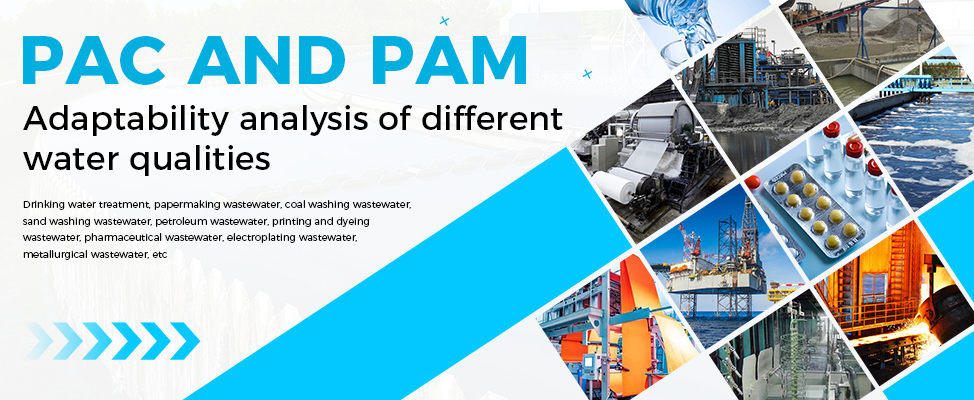
In water treatment applications, Poly Aluminum Chloride (PAC) and Polyacrylamide (PAM) are two of the most commonly used coagulants. Each possesses unique chemical properties and application ranges, requiring careful selection based on water characteristics. This article provides a detailed analysis of PAC and PAM adaptability for different water qualities to help optimize your selection.
| Property | PAC (Poly Aluminum Chloride) | PAM (Polyacrylamide) |
|---|---|---|
| Chemical Type | Inorganic polymer coagulant | Organic polymer flocculant |
| Charge Type | Cationic | Anionic/Cationic/Nonionic options |
| Mechanism | Charge neutralization | Adsorption bridging |
| Floc Character | Dense, fast-settling | Large but loose |
| pH Range | 5.0-9.0 | 3.0-10.0 |
(1) High Turbidity Surface Water
PAC Advantages:
-Excellent for high turbidity water (>100 NTU)
-Rapid floc formation and settling
-Relatively low cost
PAM Synergy:
-As coagulant aid to enlarge flocs
-Improves settling and filtration
Recommended: PAC as primary (20-50mg/L) with anionic PAM (0.5-2mg/L)
(2) Low Turbidity Water
PAM Advantages:
-More effective for low turbidity (<10 NTU)
-Molecular chain adsorption of fine particles
-No excessive metal ions introduced
PAC Limitations:
-Poor performance when used alone
-Risk of aluminum residue exceeding standards
Recommended: Cationic PAM (1-3mg/L) as primary, with minimal PAC (5-10mg/L) if needed
(3) Industrial Wastewater
Oily Wastewater:
-Cationic PAM most effective
-Excellent demulsification and oil removal
Dyeing Wastewater:
-PAC shows superior decolorization
-Combine with nonionic PAM
Paper Mill Effluent:
-High charge density cationic PAM
-PAC improves COD removal
(4) Sludge Dewatering
PAM Superiority:
-Cationic PAM is the optimal choice
-Significantly enhances dewatering efficiency
-Reduces sludge moisture content
PAC Limited Role:
-Only as conditioning agent
Water Quality Analysis:
-Key parameters: turbidity, pH, organic content
-Jar testing recommended for optimization
Cost Evaluation:
-PAC: lower unit price but higher dosage
-PAM: higher price but lower dosage
Downstream Impact:
-PAC may increase metal ions in effluent
-PAM residues may affect membrane processes
Seasonal Variations:
-Adjust PAC ratio for rainy season high turbidity
-Special attention to PAM dissolution in winter
PAC and PAM each have distinct advantages and are often used in combination. Selection should consider:
-Water characteristics (turbidity, pH, contaminants)
-Treatment objectives (clarification, dewatering, phosphorus removal)
-Economic factors
-Downstream process requirements
Pro Tip: Always conduct lab tests before full-scale implementation. We offer free technical consultation and sample testing to help identify your optimal water treatment solution.

Please contact us for free quotation by form below. We promise the quickest response within 24 hours: